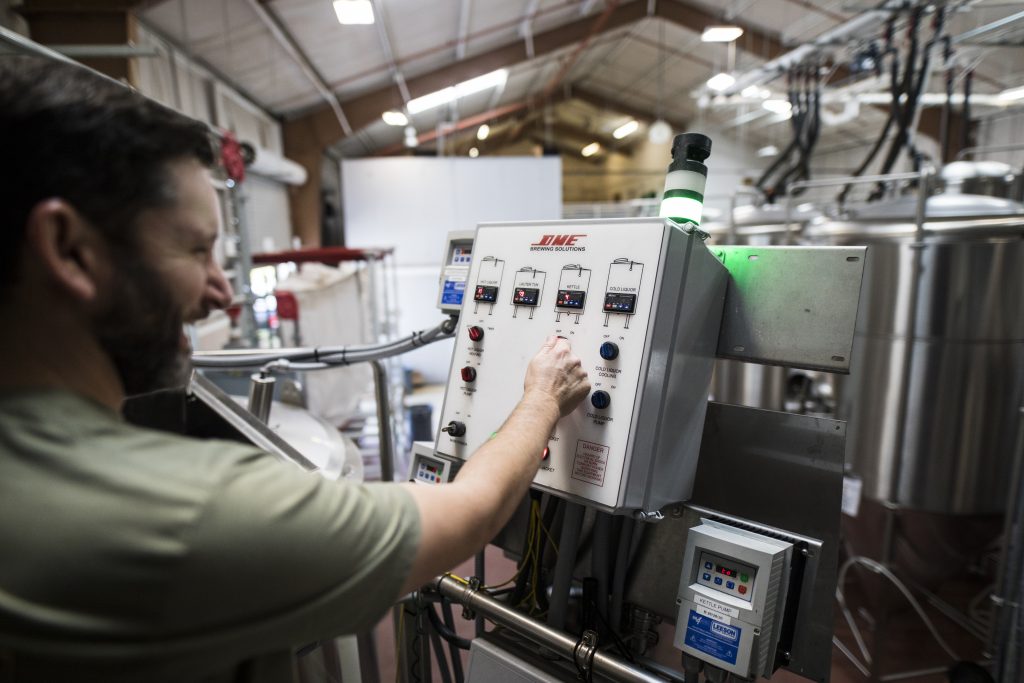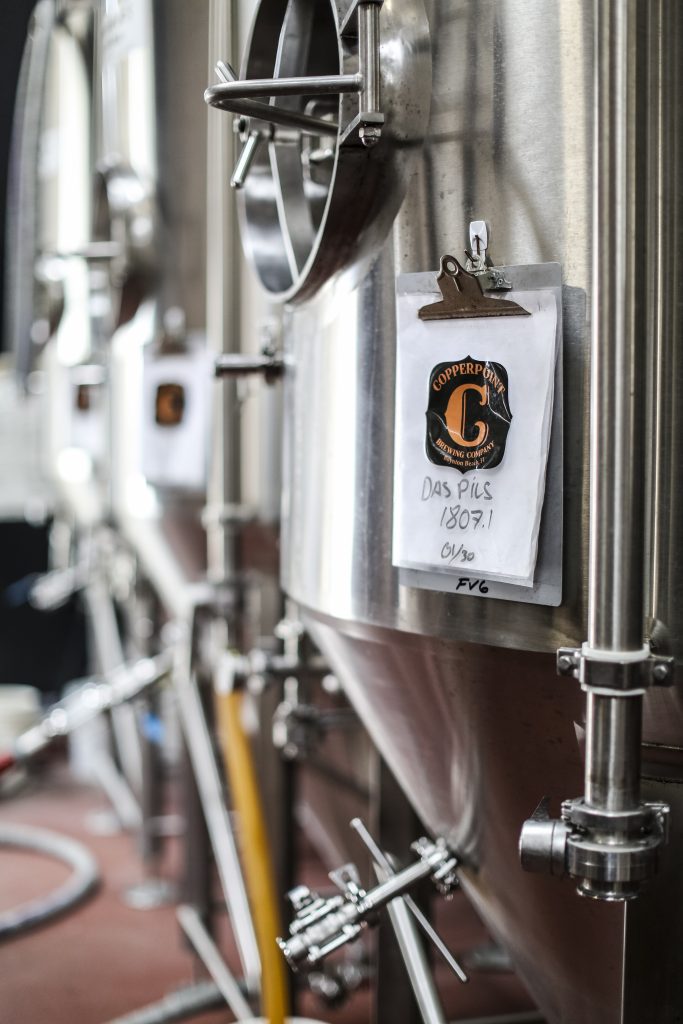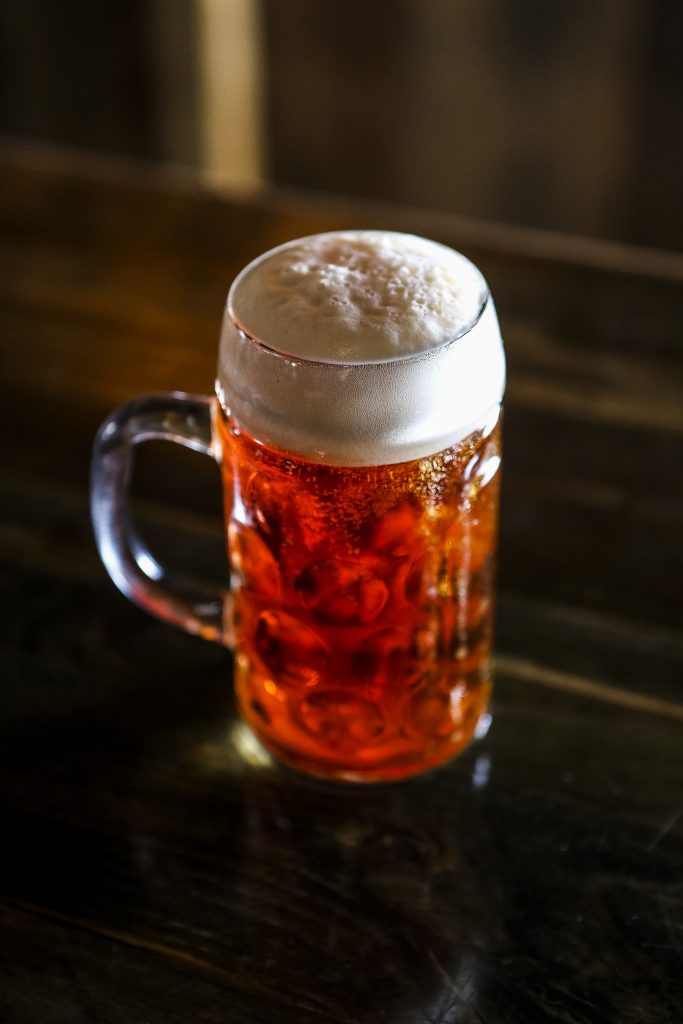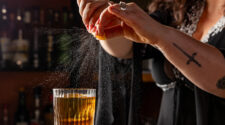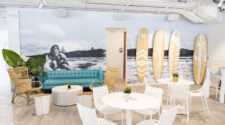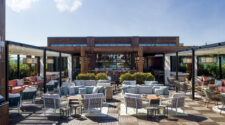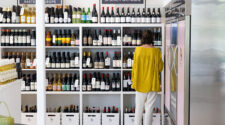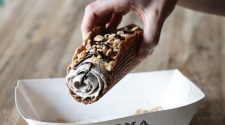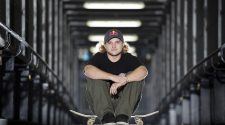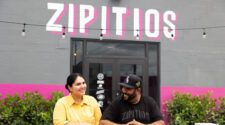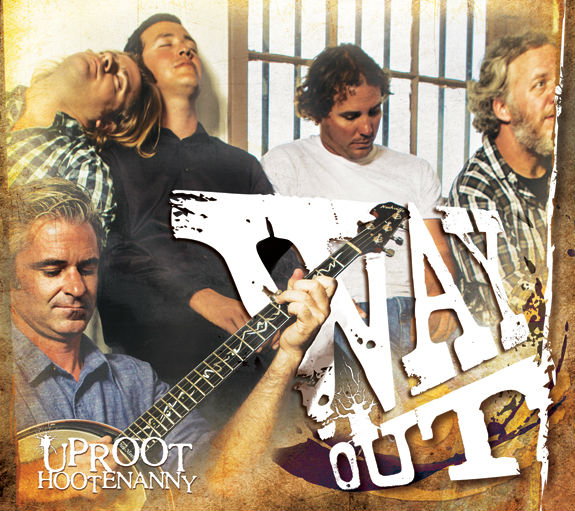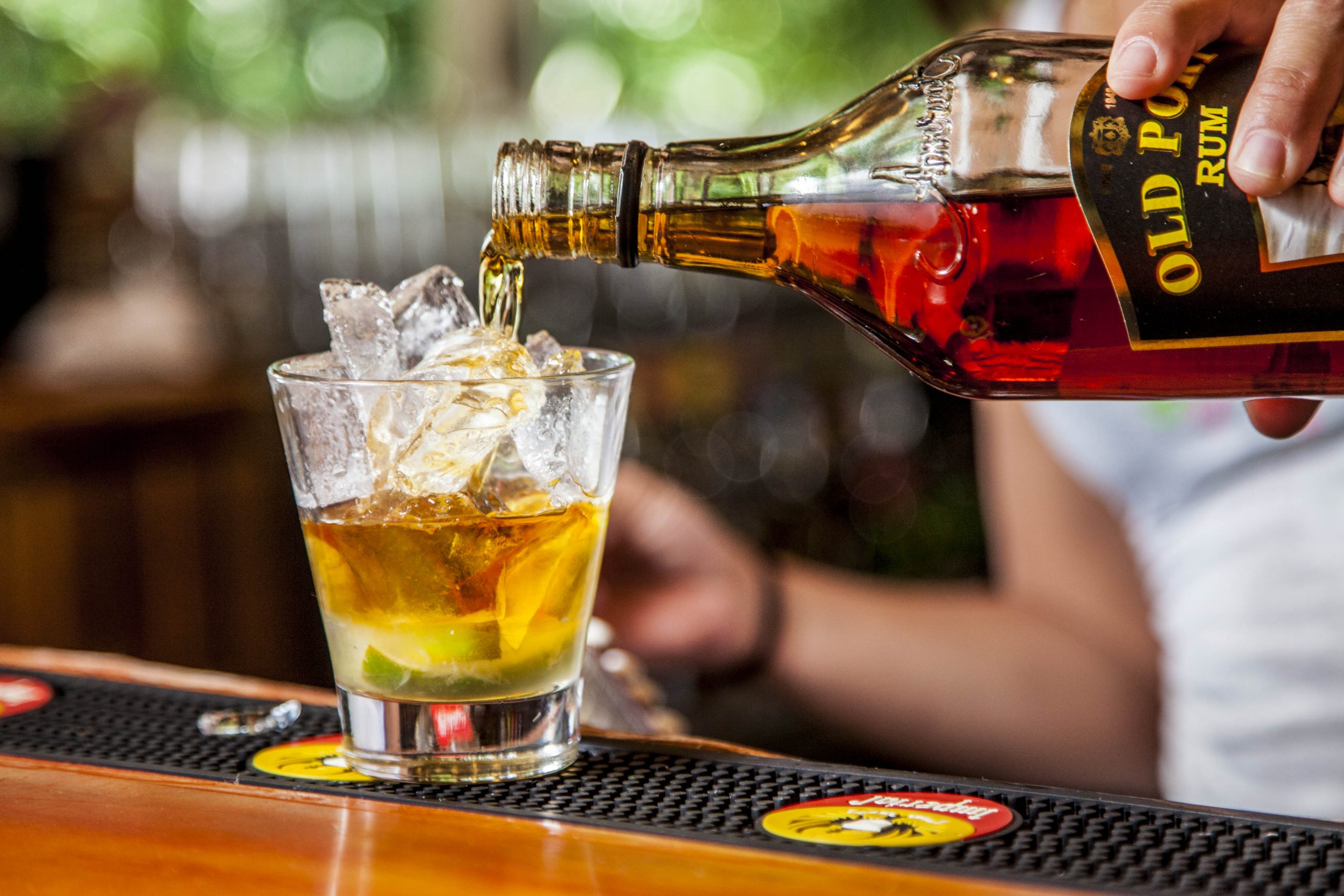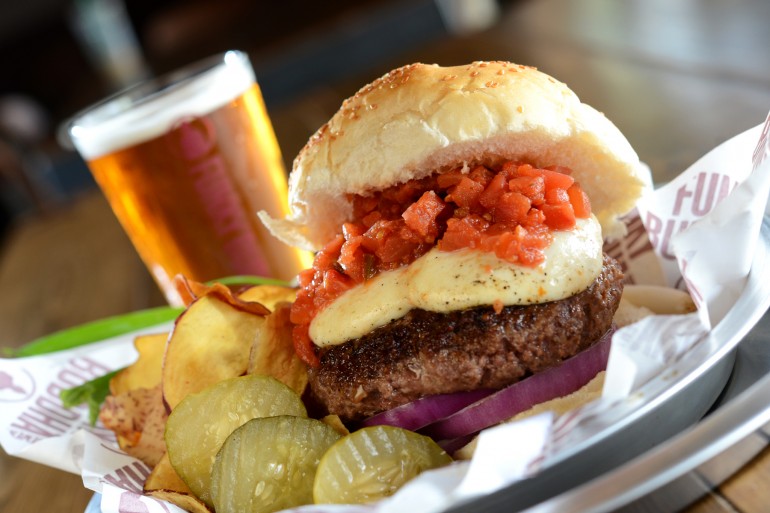Owner and Head Brewer of Copperpoint Brewing Company
When did you first start brewing?
I started as an apprentice in about 2000 at Big Bear Brewing in Coral Springs. Eventually I took over operations there.
What sparked your interest in craft beer?
It just kind of always was something that interested me. A long time ago I bartended at Brewzii in Boca Raton. I became friends with Fran (Andrewlevich, now part owner of Tequesta Brewing Company and Twisted Trunk) there during that time. I got into home brewing a little bit, but I always had the desire to do something on a bigger scale.
Are you surprised to see where the craft beer culture has gone to in South Florida?
I think it’s in a good place now. Finally we have a good buzz about craft beer in South Florida. It always seems Florida and South Florida is about ten years behind the national curve…it takes a long time for trends to hit down here. I like that there’s excitement around craft beer in South Florida right now. There’s some really good breweries putting out some good product. I’m kind of surprised at the direction that craft beer market has taken…there’s some really off the wall stuff going in craft beers right now. But that’s kind of where the market is on everything right now — fun flavors and non traditional ingredients and stuff like that. For me, when you see people putting in wacky ingredients…glitter, gatorade, stuff like that…it’s surprising to me. I don’t know. I’m kind of a purist and I like real beer first and to always taste the true beer behind it. Not be covered up with blue food coloring and glitter or stuff like that. The novelty thing is fun, but for me I’m a purist. For me it’s flavor first.
What’s your approach when it comes to recipes?
When we design recipes and make a new style of beer we think to the end game, to the flavor we want to produce, and backwards engineer to achieve that flavor. You always know what you want to set out and do. Surprisingly from the first batch of Copperpoint Lager we’ve never really changed it. The flavor came through good, clean and true to what we were looking for. IPA’s and stuff like that depending on new crop years of hops, we’ll adjust a little up and down if we want the malt body to be a little higher or lower…we’ll make small tweaks here and there. It’s always flavor first, so we make very small tweaks from batch to batch to slowly get to the goal we’re looking for…we’re open to change, but we want quality and consistency. We’re also trying to create those new fun, juicy, bright hop flavors. We bring in different variety of hops that we might not have worked with before and see how all those flavors play out. Also when we pour you a beer, we don’t want it to be an insane amount of yeast sediment in the bottom of the glass. So we’re going to give the beer proper time to condition. Also make the beer have a decent shelf life, so if you take the beer home in a crowler or growler, it’s stillgoing to meet our quality standards. Last but not least, we want the best tasting beer we can. Good, true to style, very drinkable and approachable beers.
What’s it like these days when you get together with Fran (Andrewlevich) to look back on the progress you both have made?
It’s fun when we get to sit down and relax and have a beer together and look over the past 15-20 years and see where the market and beers used to be, where the market’s going. There’s been an incredible amount of change in the last 10 years and it’s shocking to see how the market’s grown and how we’ve grown in our businesses and abilities. It’s fun to look back and say, hey, remember when we used to do simple things like this. It’s a different game now. It’s funny to think of ourselves as veterans in the South Florida industry. All in all, we’re just a couple guys brewing beers. For the most part we’re looked at as veterans in the area. We help as much as we can with new breweries opening up. Give them recommendations and help bring them up and make sure they don’t make mistakes, because we want everyone to put out a good quality product and any way we can help by doing that, we’re always happy to help.
That aspect of the local craft beer industry is very different than most businesses. Can you explain why that is?
It is counterintuitive to business. A lot of people in normal business don’t understand that. They think you’re sharing secrets and sharing intellectual capital. Obviously, we’re not giving anyone the exact recipes to our flagship IPA, but if there’s tips, tricks, techniques, sharing ingredients when they’re running short…it’s a very common thing. Everybody wants to make sure that there’s good product on the market. When there’s better product on the market, you’re going to benefit everybody. You’re going to create a stronger local crowd of craft drinkers if there’s good product out there. Local doesn’t always mean it’s good, local means it’s local. Our goal is to create a very strong quality local product.
Starting out, did you ever really see your own brewery being a possibility?
When I started out, I was just interested in how to brew on a commercial scale. I learned the craft and got better and better. I started helping people out who were opening their own breweries or having trouble in their own operations. The more confidence you build, the more confidence it gives you to start an operation from scratch. After 10 years or so, I started to see it as something that I could go off and start on my own and have the knowledge and confidence and know-how to do that.
How did your lineup of beers come to be?
It’s just, at the end of the day, the kind of beers I like to drink. What we want when we’re done with the work day and get to sit down and drink a beer. What we really make, myself and everybody in general, is what you really gravitate toward are the things you like to eat and drink. If you love steak, you’re going to cook steak at the house more often. If you love to drink lagers, you’re going to be more inclined to brew lagers as your flagship beers. If you love sours, you’re going to create a sour program because that’s what you’re really passionate about. When you’re passionate about something, that’s what really is going to come through. At the end, everyone has their preferences and that’s what they gravitate toward. We’re not chasing trends, or what’s hot in 2018. It’s what we appreciate. What we truly, truly love to do is what we’re going to do.
If you could only drink one of your beers for the rest of your life, what would you choose?
For me, the beer that we make here is the Das Pils. We make a very hoppy German pilsner. What we say here is that it’s fun for one, and it’s also fun after six or seven. It’s a low ABV beer, it’s got a really nice balanced character. There’s a good amount of hop in there. It’s a very light and refreshing hop bitterness, full hop flavor, one that you can sit around with a group of friends and have a few. It’s got a bold flavor at a low ABV.
What are some of the main challenges you deal with in the brewery?
The thing that we focus on first and foremost is quality and consistency. When we bring in raw ingredients, it’s always challenging to make sure that the beer stays at a very consistent place, especially when you’re dealing with products from different crop years, different farms, different areas. So we always strive to maintain consistency on that. On the flip side, there’s a whole lot of mechanical systems working together out there. You’re always fighting mechanical failures. Stuff breaks. We try and keep a good amount of backup parts on hand. So if there’s ever any failures we can fix that rapidly and stay online. But, it’s a manufacturing line and there’s always going to be stuff that breaks. We always try to keep on top of everything, and make sure everything is in tip top shape, and preventative maintenance and stuff like that to make sure we stay running straight and true.
On the business side, what have been some of the main hurdles to overcome?
We essentially run two separate businesses here, the taproom and brewery. Trying to run two businesses in parallel at the same time is definitely challenging. It’s gotten easier since Laura (Matt’s wife) has come in and taken charge of the back office operations and also keeping an eye and running the front of house operations like scheduling, creating events, things like that. Running two separate businesses at the same time to make sure you’re adequately staffed, not over or under, and make sure you’re running each of those separate businesses with good efficiency has been much easier because we have such a great staff here.
How has overcoming that changed the way you operate Copperpoint?
It gives me more time to focus on the beers that we do, and the new beers we have coming down the pipeline. It also allows me to spend more time with creativity and creating new fun stuff. Looking forward to seasonals. Every week we do the one-off beer, which takes a significant amount of time. It forces creativity and pushes you to do new fun stuff. It’s staying in the brewery, focusing on the beers, and making sure we’re putting out stuff that’s not only good but also fun and innovative.
Some owners can take a step back from the brewing process once systems are in place. Has your involvement changed in the brewery at all since then?
I’m still out there every day. I brew every single batch of beer. We have a good team in the brewery that understands how important the small details are. Daily we’re on the same policies, procedures and always giving everything the time it needs. It may slow us down a couple hours a day to make sure we maintain those standards, but we’re going to do everything in the highest quality as we can. We’ve got a good team and when you have a good team, it’s easy. If you have people who don’t care about the brand or quality of the brand, it’s going to be more difficult to maintain, but we’ve got a great team that works well together so it makes it a lot easier.
As far as beers go, what’s new on the horizon?
We’ve gotten into a pretty good barrel aging program, and were doing different styles of beer in oak, not just big imperial stouts. Lighter styles like saison in a cabernet wine barrel. We did bock, our “Baby got Bock”, in Angel’s Envy bourbon barrels. We’ve never put a lager in a barrel before and it was a fun project. It came out really, really good and we’re excited about that project. We’re starting to brew a lot more sours here, which is a new learning experience. It’s a whole different way of brewing because you have to understand the souring, bacteria, time and temperature. At each brewery it’s going to be a bit different as you understand how the bacteria works because the bacteria acclimates itself to the brewery conditions. It’s kind of a watch and learn process to see what works the best and what creates the best flavor profiles. Kind of standing back and seeing what happens. When we put beers in oak, people ask when it will be ready. There’s really no time table for that. It could be six months, eight, twelve, sixteen months. We don’t know. You taste and when it gets there, you’ll know.
You’re starting to play around with New England Style IPA’s and the results have been great so far. As a traditionalist, what’s your take on the hazy beer craze?
I’m kind of in the middle of the road on that beer style. At first I was very resistant because it’s an odd style of beer and one that traditional brewers haven’t embraced. As the brewers get better at making that style of beer, the flavors are more balanced and more drinkable. So I slowly started to warm up to it. We’ve done a few here now. For all the beers we do, we try to keep them balanced and drinkable, no matter if it’s a 4%blonde ale or a 10% imperial stout. We want the beers we put out to be balanced and drinkable. Not something you only have two sips of, or too sugary sweet, syrupy or insanely sour. We want you to sit down and have a beer, and drink the whole beer and something you might consider having another one. Create beers with those flavor profiles, and learn how to brew different styles of beer but still keep balance and drinkability is something we strive to do.
The response has been very good. We’re going to, as of now, make a rotating NE style hazy IPA. We do a lot of different style IPAs but we really like the flavor profiles of those beers and they’ve sold very well so were going to run with that. It gives us some fun creativity in the brewery and it opens up Copperpoint to that rapidly market of the hazy, cloudy IPAs. It’s fun experimentation, response has been good, we’ve been happy with the flavor profile. It’s been fun and we’ll keep having fun with it.
You’ve got a pretty big space next door. What are the plans for expansion and distribution?
Long term the plan is…so we have almost 10k square feet in that north space. A third will be for canning line and keg cleaning area. A quarter will be a new walk in for packaged products. So if we run a thousand cases of cans we’ll have a place to put them in the walk in. Also for barrel storage because we want to increase our oak aging and barrel aging program.
When you start canning, are you going with 12oz or 16oz?
We’re going to do a mix of both. Our goal is to put lager in 12 oz cans, do six-packs of lager. Other specialty beers, we’ll be doing four-packs of 16 oz cans. Different beers have a place in different can sizes. That said, some beers we won’t be doing in cans. I think some beers just deserve to be in glass. It’s an old way of doing things but I don’t think that some beers work well in cans. So there will be a mix of glass and different can sizes that work best for each individual beer.
As a pretty stark contrast to other local breweries, you decided to take things slow and strategic when it came to canning and distribution. Why is that?
We wanted to introduce the brand to the market and get a good local following within that market. We weren’t trying to send out the beer to Atlanta, Wisconsin, and Los Angeles as soon as we open. We want to make sure the beer we put out is exactly as we like it. We wanted to make sure we could keep up with our local market before we expanded to other markets. We wanted to grow in a slow and very calculated manner and so far we’ve held exactly to that and it’s worked well for us.
Does it ever feel like work?
I never wake up and say “I don’t want to go to work today” but it’s definitely work. Early mornings, late nights. There’s days we’re in the brew house for 15 hours a day. It’s definitely work, but it’s not something that I wake up and I don’t want to do. There’s nothing else that I want to do as a career and it’s still fun and interesting. After all these years, it’s still something I want to do on a daily basis.
How much emphasis do you put on the water and malts used in your beers?
From start to finish, we have a very involved water purification system. All good beer starts with great water. If you don’t have great water, no matter what you do, you’re not going to have good beer. We focus heavily on water purification and we source the best malts we can. We do yearly samples and do quality control in the malt that we bring in. The malt is the soul of the beer. If you use poor quality malt, you’re not going to have a good clean malt character in the beer. We work with several growers in the pacific NW to bring in the best and freshest hops we can to make sure we have the bright, crisp HOP flavors in the beer. We give a significant amount of time for conditioning to make sure the beer is where we want it before we send it out the door.
How about the beer lines?
We use very small diameter DRAFT lines so a very small amount of beer is held in the lines. All the components that ever touch the beer are either very high quality draft line or stainless steel. There’s no chrome plated brass like you’ll find in typical draft systems. The beer taps at the bar are also stainless steel. The lines inside the tower are stainless steel. Everything in the walk-in from the keg couplers, or keg taps, and all contact is either stainless steel or high quality small diameter lines.
Where are you guys on the trendy, off the wall beers that are going around these days?
It’s not really our focus. Our focus is typically on high quality traditional beers…that’s what has driven our sales. We’ll do fun stuff week to week and if that really catches on, we’ll do more. Experiments we do for one off Wednesday like Cold-Brew Coffee Lager has become one of our staples in the taproom because it’s such a great beer. Often times at the end of the day, that’s what I’ll find myself drinking. The stuff that’s insanely sour, or with artificial flavor or extracts, or with glitter floating around it, is not really my thing. People are putting in powder Tang, marshmallows…that’s not my thing. We look at the clarity, foam retention. We want to make sure the beer is good. We look at the beer and want ingredients that are natural and true. We take a lot of time and we spend a lot of money to do that. You can call up an extract company and get a small bottle, put in a few drops and be done with it, but we try and use all natural ingredients and make sure the flavor is very bright and true to what we’re looking for.
Food trucks can play a big role in the taproom side of the business. How much focus does you and your team place on them?
We pay a lot of attention to not just have a truck here seven days a week, but to make sure that we have good trucks in. We’ll bring in trucks for trial runs on Mondays and see how they do and gently let them walk before they run. We pay a lot of attention to the food they serve and make sure there’s not just greasy stuff on the truck. Just like all craft beer isn’t good because it’s just craft, same with food trucks. It’s not always easy to weed out the bad ones, but we try to make sure there’s good quality stuff out there, because it reflects in here. If there is a truck out there that’s just serving fried greasy stuff, they (guests) might only have two beers and leave to go get dinner. If there’s a good truck with good food, they’ll stay longer and spend more money, and have a better overall experience. It’s beneficial to both of us. The Rolling Chefs did steak night and said they always wanted to do this, but never found a venue, and I said ‘let’s try it.’ If you’re serving $25-30 steaks off a truck with a la carte sides, you don’t know. They kill it! They do a good job…what they cook is always good. They bring in special plates and silverware, have a food runner come in, and a lot of people take advantage when they come to the brewery. They’ve done Cornish game hens brined in our Key Lime Kolsch. It’s a fun little project. Our message to the food trucks is to put out good food and have good portion sizes. At a certain point, you need to have a certain amount for dinner. If you’re going to put out “that” for $10 and it’s not an entrée sized portion, increase to $14 and people will come and get it as dinner. You don’t want to leave and pick up food on the way home. Portion size is there, food quality is there. Nobody has ever said that it’s too expensive. People want good quality food and aren’t afraid to pay for it. We have a good crowd that appreciates quality.
How difficult is it to manage the food side of things?
To create a schedule lineup is difficult. And there can be a trust issue between you and the food truck. They have to make a certain amount of money before they roll the truck. If they come in and only sell $100 and there’s three people working on the truck, they’ve lost money. They want to know that if they come here, they’ll make money. It’s a Basic symbiotic relationship. If there’s a good crowd in here, you’re the only food option. We’re set up in restaurant style seating and it’s a comfortable place to sit down and eat and have a couple of beers. We’ll see that when people come in and how much time they spend here. They’re not here 30 minutes, they’re here a couple hours. It’s comfortable. It’s surprisingly difficult to maintain a good lineup, schedule, stuff like that. Brie (Taproom Manager) is taking care of it now and probably spends four hours per week. Now that we have a new truck who wants to work with us, we make them bring in food and have them do a full tasting. Look at the menu, prices, taste the food. Before we just asked for the menu…and the menu may look good, but the food came in sub par. Now we do a full tasting and it’s worked well. The lineup of the trucks we have now is really, really solid.
If you could go back to when you first started brewing, what advice would you give yourself?
It’s hard to say because I took so long before I jumped in to the operation here that there’s no massive missteps that I can look back over the years and see. Everything has been slow and calculated and I’ve made sure that before we make a jump or increase production that we know exactly what we’re going to do. I would say take your time, learn the craft. If you don’t know how to do something, call up someone who’s been in the industry a long time and ask them. They’re usually helpful about it. The sharing of information IS very common in this industry (versus others). If you don’t know how to do something, don’t take a guess. Call multiple people and ask the best way to go about it instead of just guessing and say “I hope this works.”
How is the future looking for Copperpoint?
We want to grow the brand in a strategic manner and open up new markets when we have the capacity. We have the space, the biggest thing, and the infrastructure, which is the second biggest thing. We’ve built out in a manner where when it’s time to expand, we’re ready to do that and we don’t have to cut apart the entire brewing system and cooling system. Everything is ready for expansion now that we have the canning line coming in. We bought is a high-speed canning line and that can put out enough product where if we needed to supply the entire state of Florida, we can do that. We have the square footage for storage for that as well. We can effectively stay in this building forever. We’re not looking for a second location for a production facility. We achieved that when we took over the north space…we have sufficient space. It’s building a team to grow the brand and keep the quality of the product.
151 Commerce Road
Boynton Beach, FL 33426

